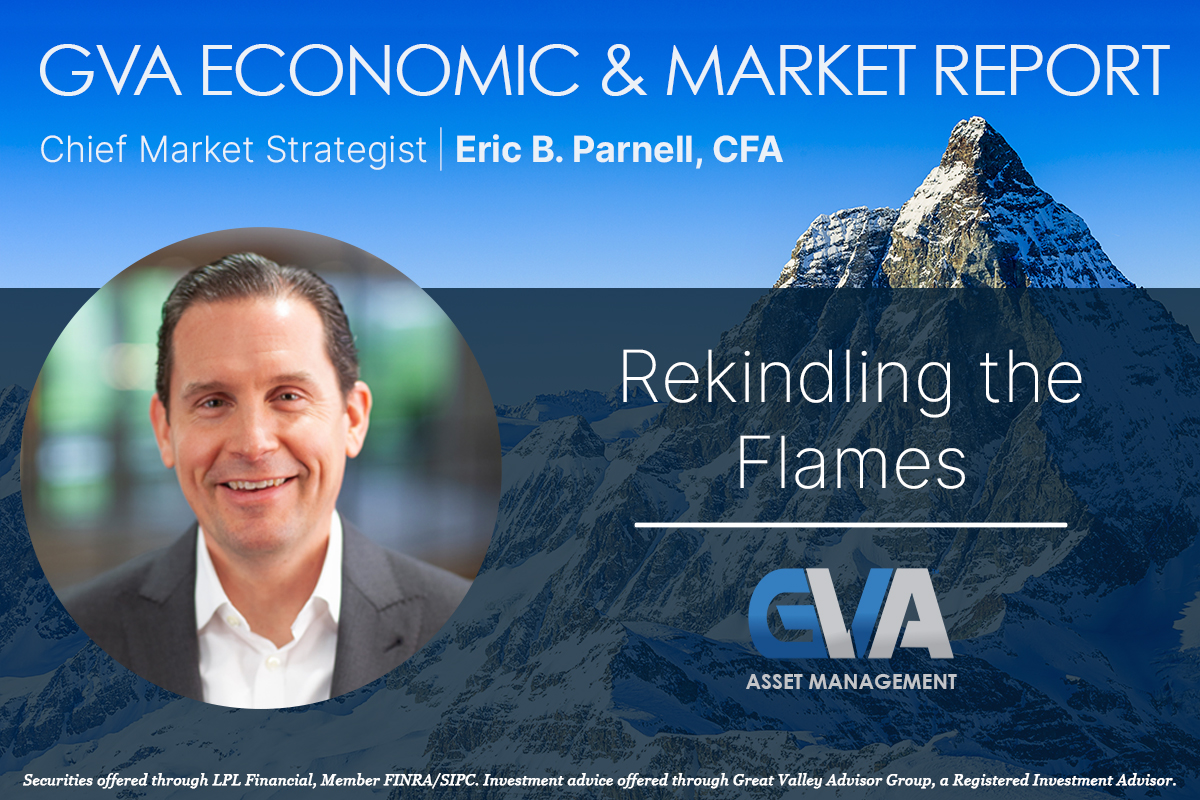
It continues to top the charts as a major downside risk for capital markets as we continue through the 2020s. It sent the markets reeling a few years ago, and the problem was never fully eradicated even though the focus of policy makers has since turned elsewhere. And recent developments both on the human decisions making and market reality fronts are converging to potentially bring this threat back to the surface. What is this downside risk? It is a renewed rise in high inflation. And it warrants close attention as we continue through the remainder of the year and into 2025.
Lingering under the surface. The good news remains that headline inflation pressures continue to fade from the peaks of two years ago. With the latest Consumer Price Index release for September 2024, the annual headline inflation rate dropped to new post-2022 lows from 2.6% in August to 2.4% last month. This is constructive and consistent with the idea of the Federal Reserve guiding inflation back to its 2% target rate. But when looking at the Core CPI that excludes food and energy, the story starts to look a little different. For example, the decline in the annual inflation rate has stalled in the 3.2% to 3.3% range, which is relatively high for the post Great Financial Crisis period.
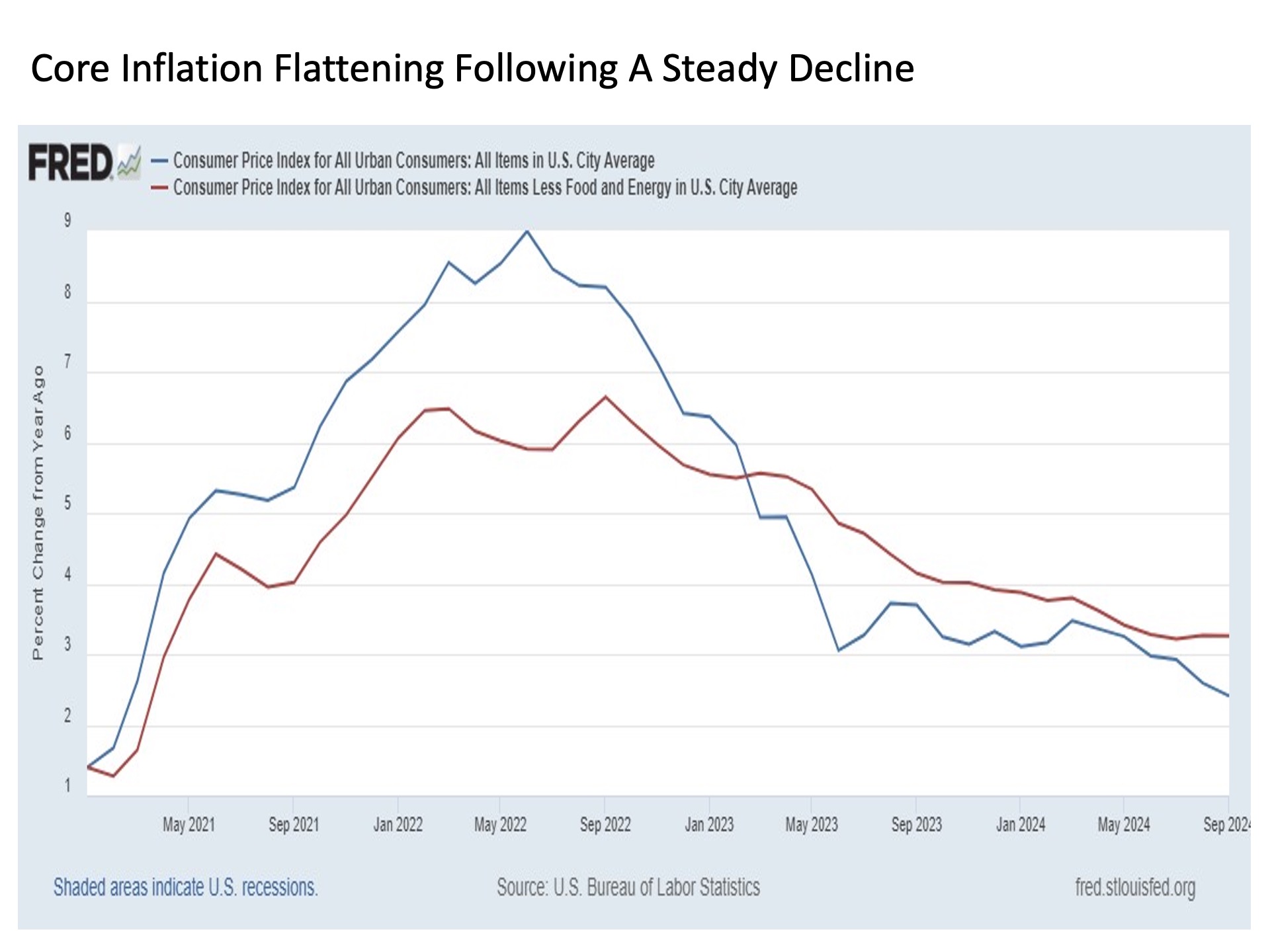
Digging a bit deeper reveals some lingering concerns. More specifically, services inflation remains hot long after the 2022 inflation episode subsided from the headlines. After peaking at an annual 5% rate in the spring, services inflation excluding shelter had been gradually falling back. But in September, it ticked back higher.
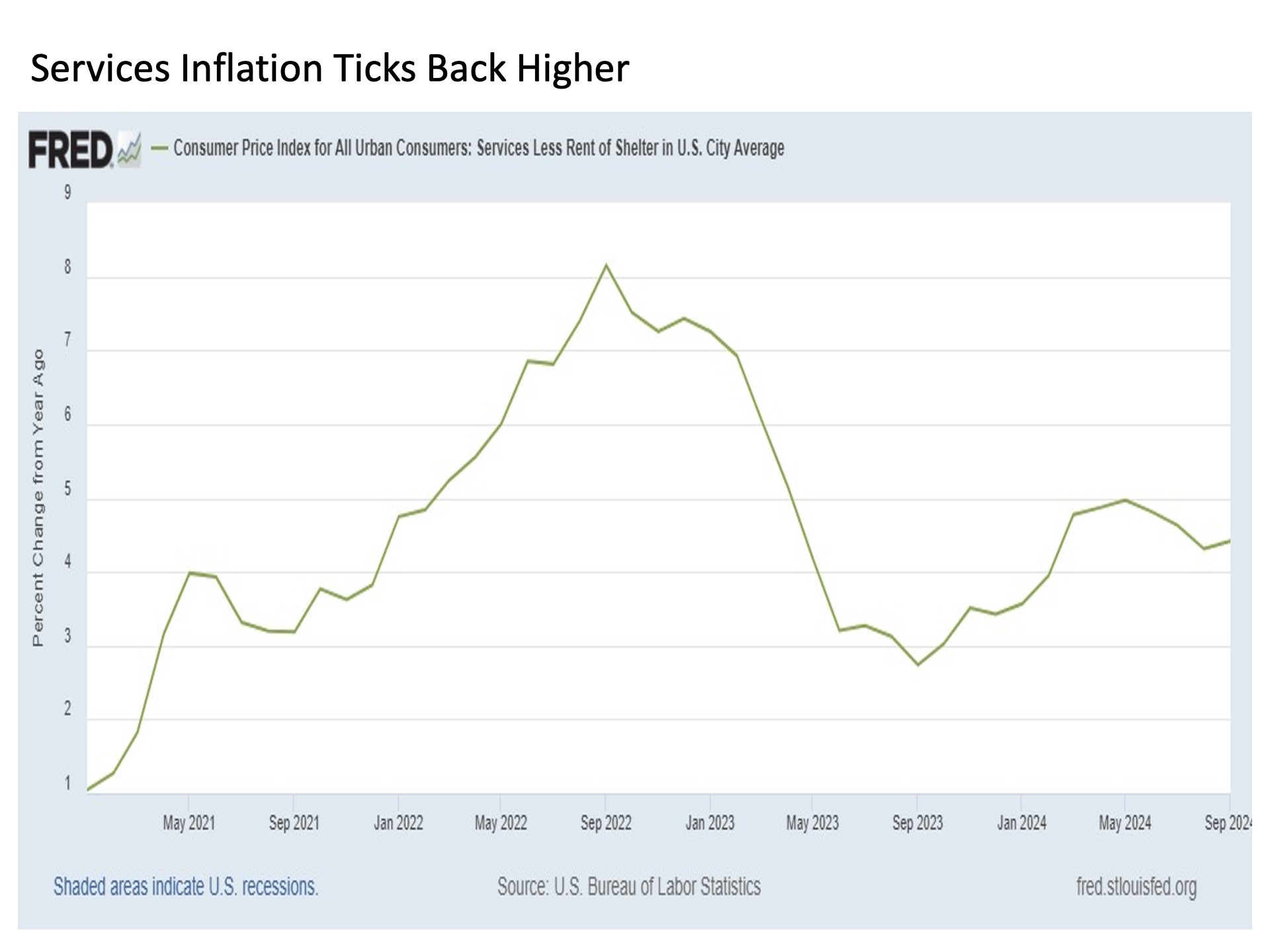
Now one data point in a major sub-category does not a headline trend reversal make. And the annual services inflation rate is still lower from the spring even after the latest blip higher.
With that being said, inflation pressures continue to brew underneath the market surface, and this risk was reinforced with the latest CPI report on Thursday. As just one of many examples, we continue to see a steady rise in the monthly inflation rate in headline, core, and services inflation dating back to the spring.
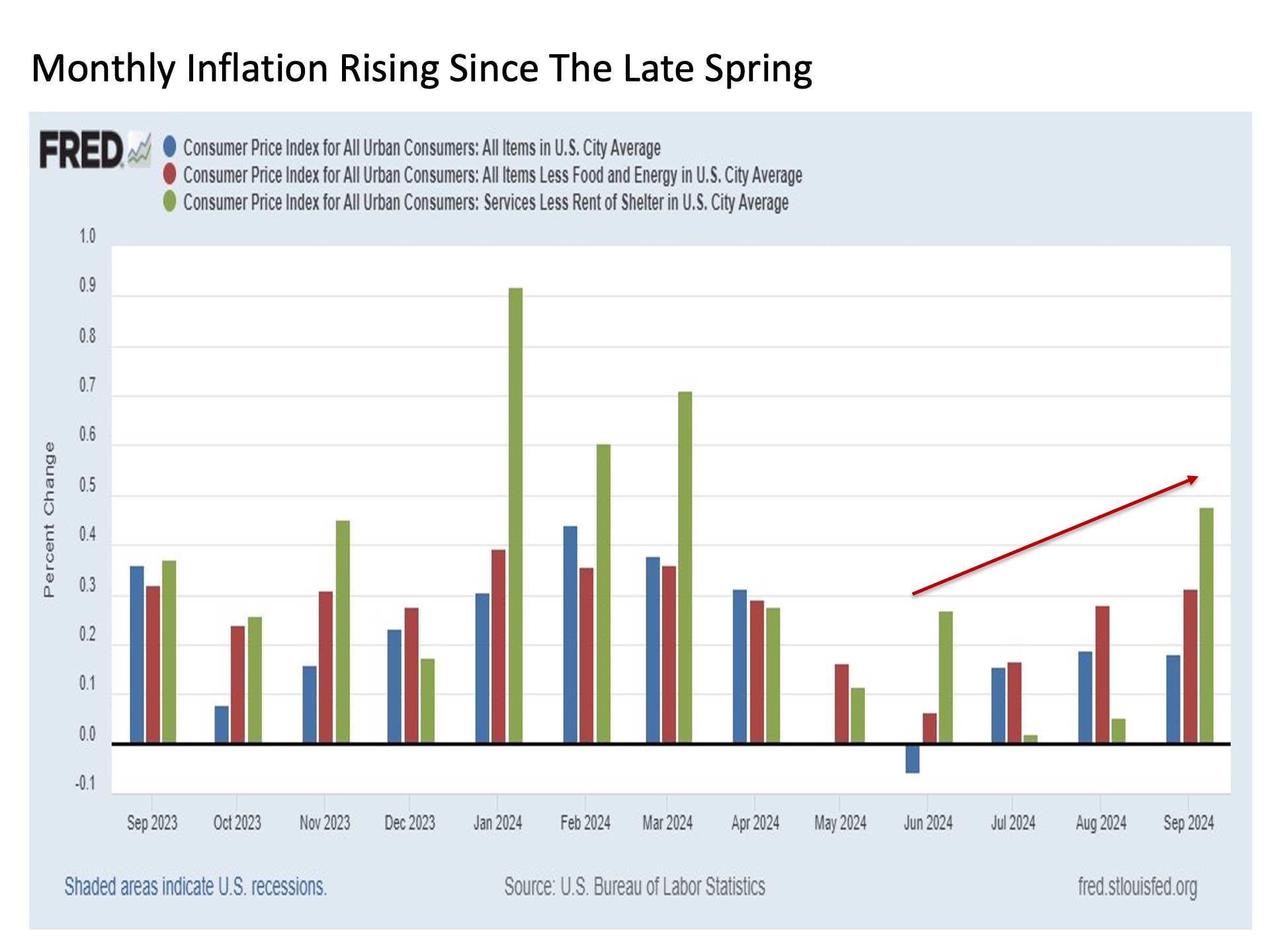
Policy error? Does all of this mean that the Federal Reserve committed a policy mistake with its decision to cut interest rates by 50 basis points emerging from their latest FOMC meeting in September? Now this Chief Market Strategist would contend that the Fed went unnecessarily too far by jumping out of the gates with a half point cut in September. Investors have been anticipating an economic recession six to nine months out going all the way back to 2022, but the actual economic slowdown has remained elusive. And with the economy currently running at a projected economic growth rate north of +3% with an unemployment rate that while higher from its lows in early 2023 is still lower than the peak rates from previous economic expansions and corporate earnings that are still projected to grow at a double-digit rate over the next 12-months, a strong argument could have been made that the Fed need not cut interest rates at all in September, much less 50 basis points. At least the 25 basis points that most market participants were expecting up until a few days before the Fed meeting might have been the more measured and prudent choice, but only time will tell.
Nonetheless, the Fed did have the flexibility to cut by 50 basis points as they did in September. And they maintain the flexibility to cut further if they so choose at their upcoming November and December meetings. This is due to the fact that inflation trends are still at their back, and the real interest rate is at its highest levels since before the Great Financial Crisis, implying that monetary policy conditions are relatively tight in an environment where some cracks in the economic growth outlook are starting to form.
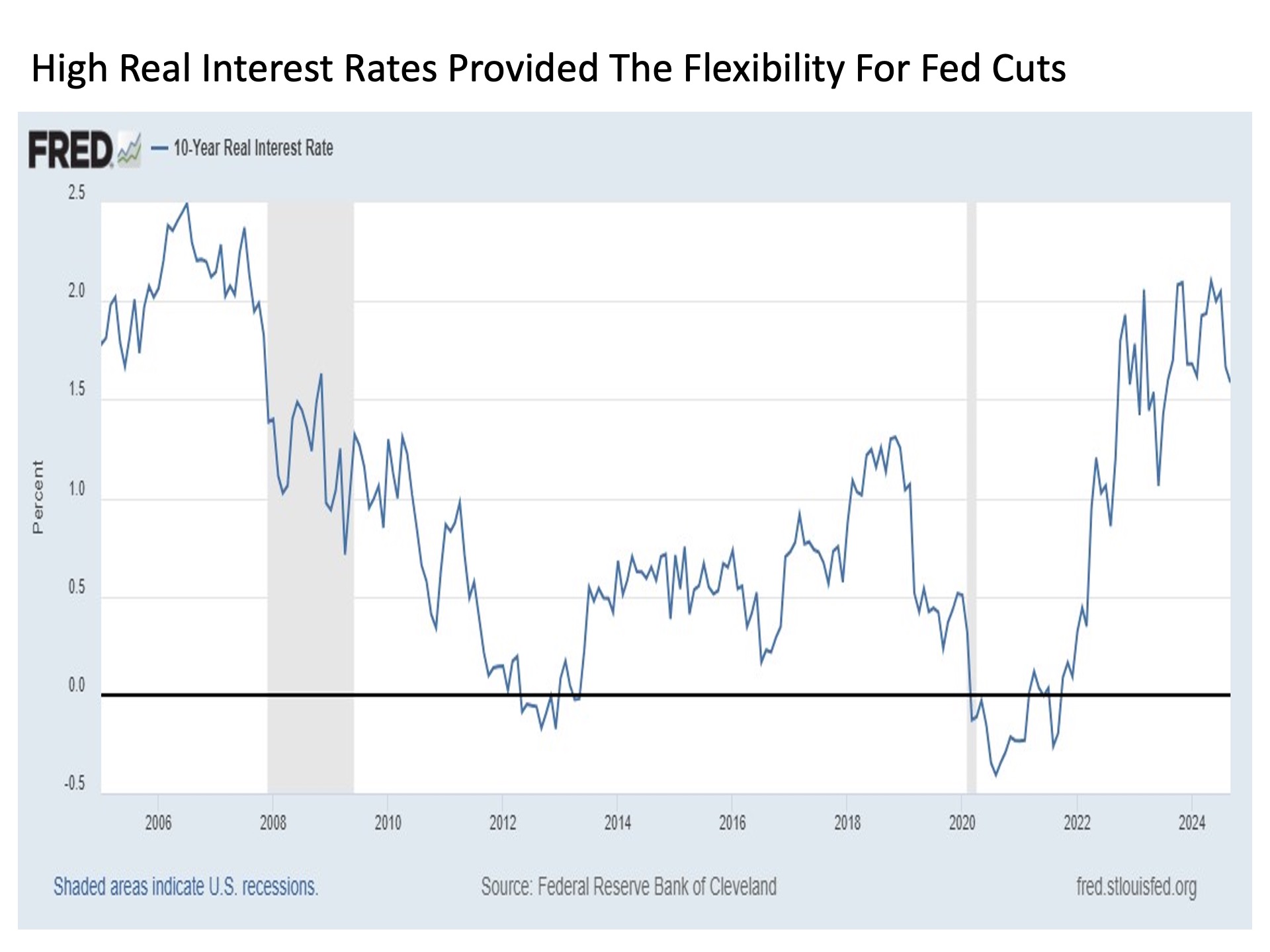
Keeping a close eye. If such inflation worries start to hit the headlines, it bodes ill for both stocks trading at nearly 30 times earnings on the S&P 500 and bonds with a 10-Year U.S. Treasury yield trading around 4%, perhaps even more so than it did in 2022. So what to watch to determine whether any current renewed inflation concerns start to become renewed inflation realities?
Consider the 5-year breakeven inflation rate, which shows the average inflation that the market is pricing in over the next five years. Recently, it touched a new post-2022 inflation outbreak low just below 1.9%. But since early September, this reading has spiked higher toward 2.2%. While still low, it will be worth watching in the weeks ahead to see how much further this jump in inflation expectations continues to run.
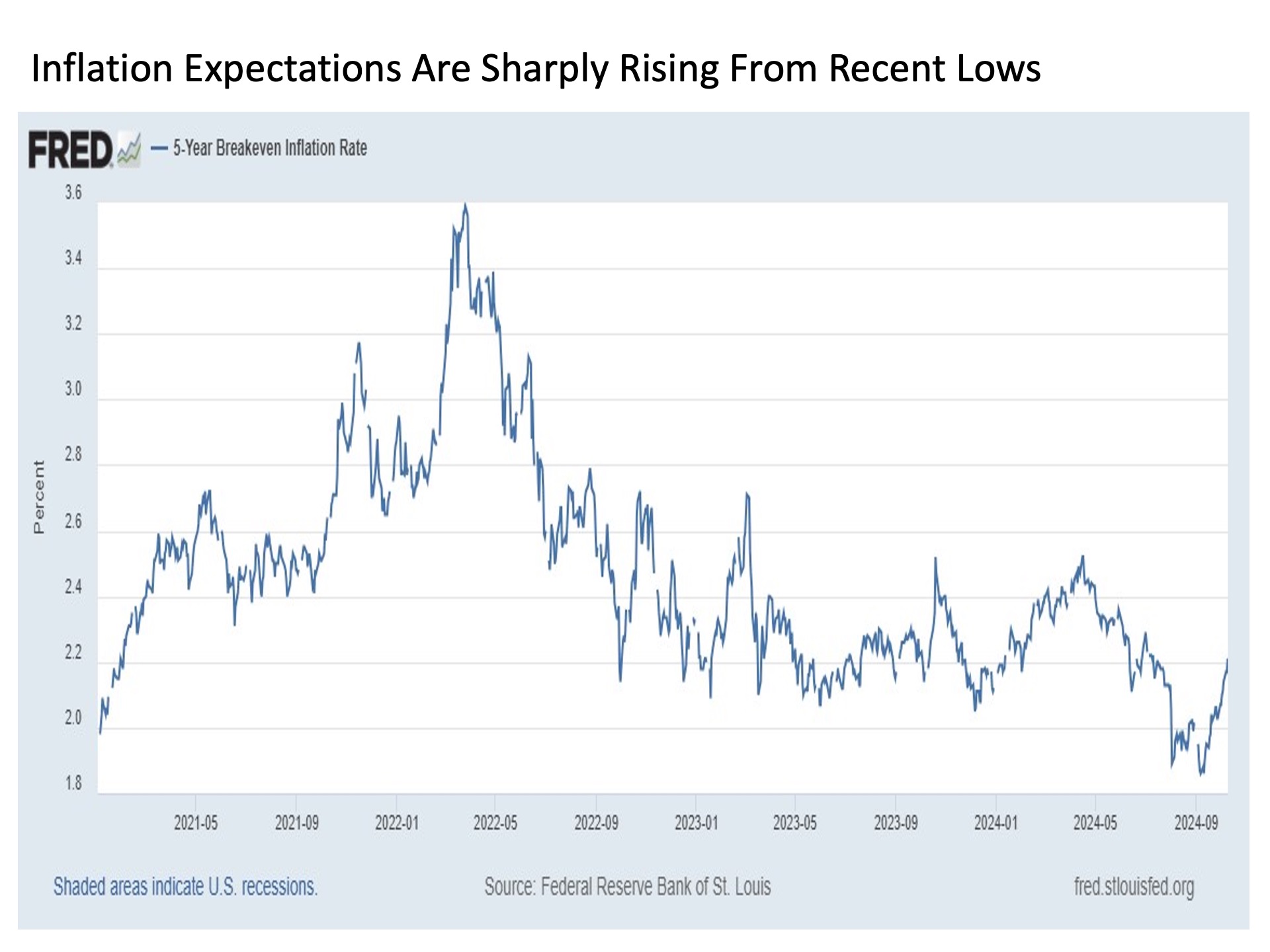
Next, watch for the latest reading in the Personal Consumption Expenditures (PCE) price index. This is the Fed’s preferred inflation measure and will come out at the end of the month for September. Up to this point, the PCE and Core PCE readings have been decidedly positive and supportive of the Fed’s inclination to start easing monetary policy, as both are well below 3% and the headline rate is descending toward 2%. But much like its Core CPI counterpart, the Core CPE annual inflation rate has flattened in recent months. A confirming renewed rise in either of these readings for September would only add to the idea that inflation may not be dead quite yet.
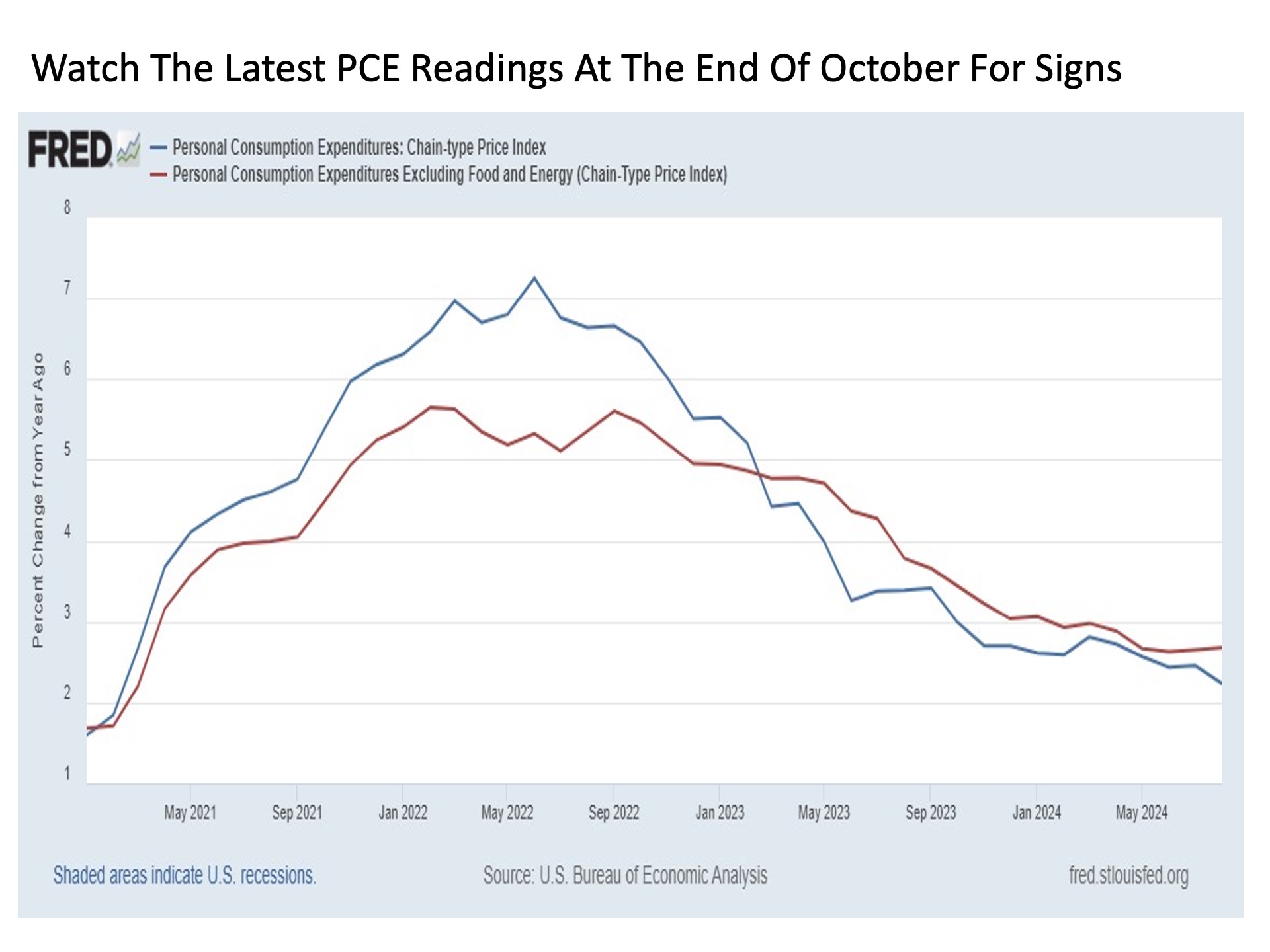
I/we have no stock, option or similar derivative position in any of the companies mentioned, and no plans to initiate any such positions within the next 72 hours. I wrote this article myself, and it expresses my own opinions. I am not receiving compensation for it. I have no business relationship with any company whose stock is mentioned in this article.
Investment advice offered through Great Valley Advisor Group (GVA), a Registered Investment Advisor. I am solely an investment advisor representative of Great Valley Advisor Group, and not affiliated with LPL Financial. Any opinions or views expressed by me are not those of LPL Financial. This is not intended to be used as tax or legal advice. All performance referenced is historical and is no guarantee of future results. All indices are unmanaged and may not be invested into directly. Please consult a tax or legal professional for specific information and advice.
Compliance Tracking #: 643525-1
